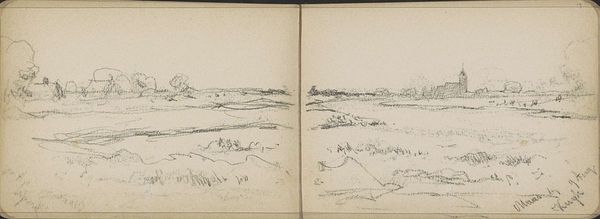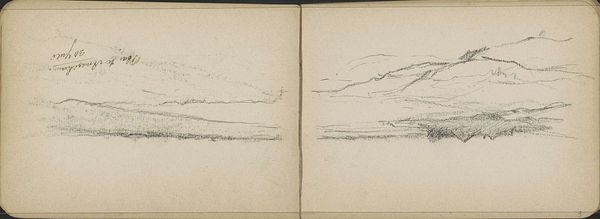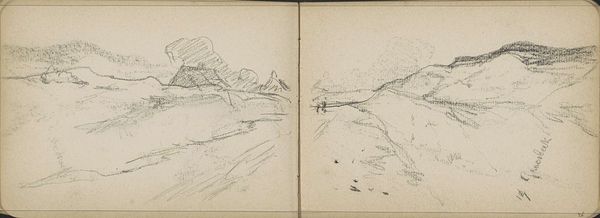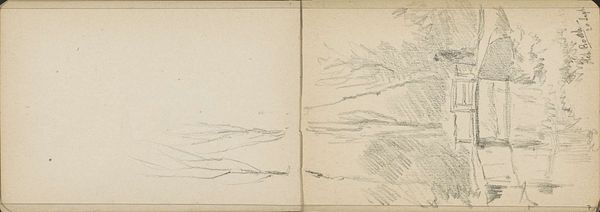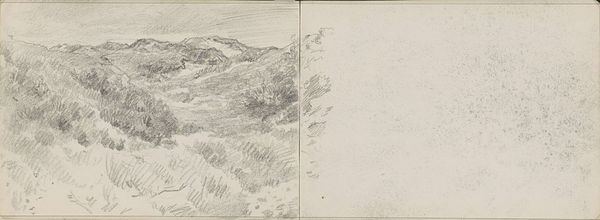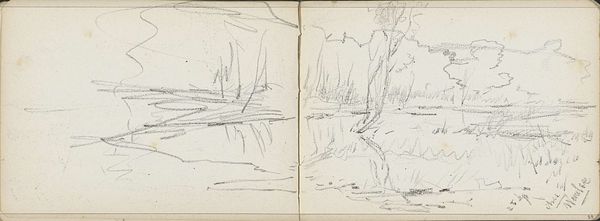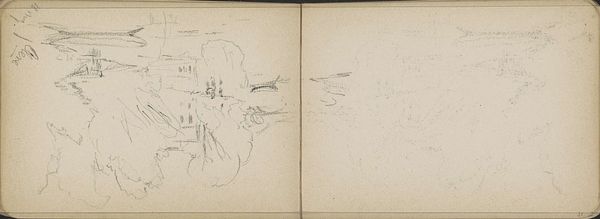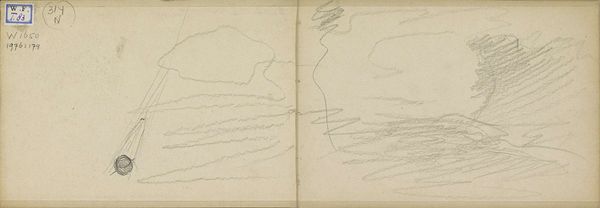
#
light pencil work
#
pen sketch
#
sketch book
#
hand drawn type
#
personal sketchbook
#
ink drawing experimentation
#
pen-ink sketch
#
pen work
#
sketchbook drawing
#
sketchbook art
Dimensions: height 113 mm, width 159 mm
Copyright: Rijks Museum: Open Domain
Curator: Here we have "Landschap bij Wyhlen," or "Landscape near Wyhlen," by Willem Cornelis Rip, likely from sometime between 1896 and 1898. Editor: My first impression is one of spontaneity. It has the light touch of a quickly captured moment, the softness suggesting graphite, perhaps? A fleeting record of place. Curator: Absolutely. These pages come from one of Rip's sketchbooks. We see his interest in capturing the landscape through the most direct means—essentially, through lines. Editor: I’m drawn to the material reality of a sketchbook. To consider the type of paper used, the portability, and the constraints it imposed on Rip's practice. The texture, the weight...they're all active participants in this piece. What does this immediacy reveal to us about the depicted space? Curator: I see the artist seeking to extract a feeling, the essence of this landscape. It could evoke a sense of calm, a stillness perhaps related to Romanticism? The sparse lines might indicate vastness but, being incomplete, almost invite the viewer to finish the picture. Editor: And the date scribbled near the edge - a marker, a stamp of labor, the time spent! That transforms this intimate record into more than just a collection of landscape elements. What stories do the fibers hold about the society and the labor process during its creation? Curator: Very insightful! To build on your thought, Rip wasn’t merely documenting but interpreting, encoding his emotional relationship with the natural world and possibly embedding it in a larger Dutch art history, perhaps hinting at a national identity tied to its landscapes. Editor: True, thinking about it now... it almost urges one to reach back into that society to understand that era, through such humble items! Curator: This landscape reminds me of the universal urge to connect with and understand the land around us. It is this longing to which this art speaks, by not actually speaking in the traditional sense! Editor: Right. Every deliberate sketch invites one to connect both materially, to how that art came to be, as well as personally and with a memory triggered by what it now evokes.
Comments
No comments
Be the first to comment and join the conversation on the ultimate creative platform.

